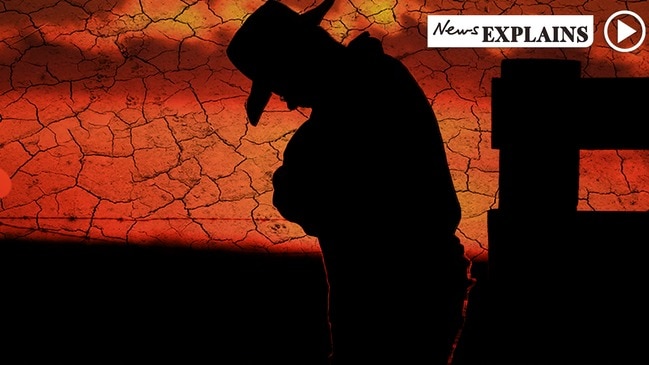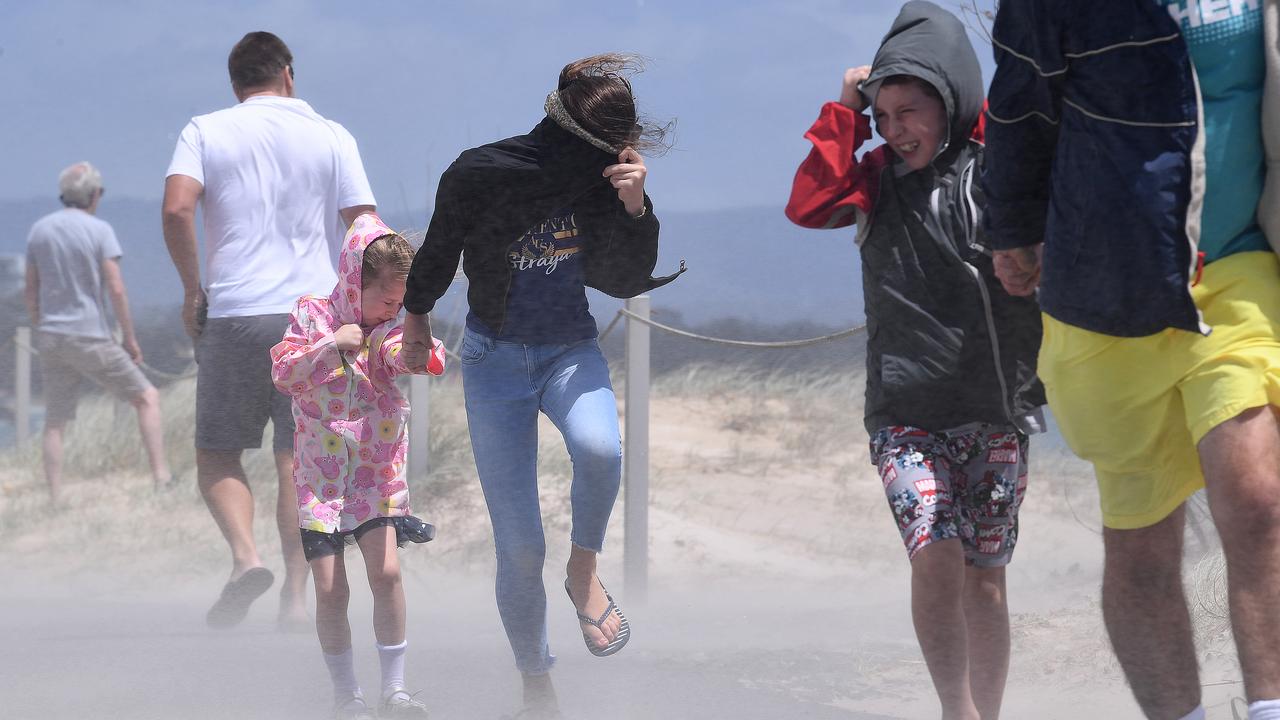Photos reveal drought’s toll as outlook remains grim
From the city to the bush, the drought is turning large parts of Queensland into a dust bowl — and it’s predicted to get worse. SEE BEFORE AND AFTER PHOTOS

QLD weather photos
Don't miss out on the headlines from QLD weather photos. Followed categories will be added to My News.
THESE photos show the devastating toll the drought is taking from the bush to the city, and there is no end in sight for Queenslanders.
The drought is almost certain to tighten its grip on southeast Queensland in the last remaining months of the year as long range weather forecasters offer little hope that good rain will provide relief before 2020.
From Rockhampton in the north, south west to Toowoomba, deep into the outback and even Brisbane’s inner-city, the state is becoming a dust bowl.
Jonathan Pollock, climatologist and long ranger forecaster with the Bureau of Meteorology, points to two key variables which play a key role in the drought equation.
Waters in the eastern Indian Ocean near Java are cool, and waters of Cape Horn in Africa are warm.
Review to examine warnings during Qld bushfire threat
Homes lost, lives threatened on Sunshine Coast in 1986
That means we have a positive Indian Ocean “Dipole’’ which, in an extremely complex way, is related to the more well known el Nino effect in the central and eastern Pacific Ocean.
In a non complex way, it means much of Australia won’t get much rain before the end of the year.
Reverse the situation, with warm water in the eastern Indian Ocean and cool water off Africa, and thing could be vastly different.
“But at the moment our long range forecast is for drier conditions across much of Australia for the next few months,’’ Mr Pollock says.
The only exception is the northern part of Western Australia and Tasmania’s south west, where conditions are predicted to be “neutral’’ — neither wet nor dry.
But the weather, as always, can provide welcome surprises.
Mr Pollock and his colleagues will watch the arrival of the Monsoonal Trough which comes down from Asia annually and which could, in theory, bring strong falls across the northern half of the continent.
There is also no way of knowing if a cyclone could form in the Pacific between November and April in early 2020, make landfall in Queensland’s north and produce massive localised falls as it moves inland.
“We are only making predictions about what we expect will occur at the beginning of what people often refer to as the rainy season,’’ he says.
Allan Dingle, chairman of Canegrowers Bundaberg, said it was the driest he had ever seen it.
“A lot of farmers haven’t planted for the simple reason that it is so dry and there doesn’t really seem to be any end in sight,” he said.
“We need rain yesterday.
“Some are re-irrigating, some probably haven’t.
“Unfortunately there are growers that don’t have any water, it’s certainly concerning for those individuals.”
It is also being felt in the city. Busy mum Ashley Gordon, 34, said she was frustrated that many of the parks in her home suburb of Tarragindi had become dry.
“They’re very dusty,” Ms Gordon said.
She said that while she understood the state was suffering through a drought, the dry parks also meant her daughter Lila spent less time in the outdoors.
“We live on a pretty small block,” she said.
“Being able to go to your local park and have a really nice area where you cannot only play in the playground, but throw the ball and have a picnic is really important.”
“It’s sort of is the only real chance to really get outside.”
But the Australians bearing the brunt of this absence of rain live largely north of Dubbo in northern New South Wales.
Many districts have seen no substantial rain all for three years, and have suffered crippling financial blows including stock loss and crop failure.
In Queensland, as of September 1, there are a total of 33 councils and four part council areas drought declared representing 66.1 per cent of the land area of Queensland.
The huge majority of drought declared shires, with exceptions including Richmond, McKinlay, Boulia and Winton, are south of the Tropic of Capricorn.
The drought has hit the Granite Belt just west of Brisbane particularly hard, with the State Government now offering to provide around $800,000 per month to truck in water which will be needed to top up the Storm King dam which is rapidly drying up.
Queensland Premier Annastacia Palaszczuk has again acknowledged the drought as having a powerful impact on the well being of hundreds of thousands of Queenslanders.
The Premier announced 6 organisations across the state would share in a record $1 million in grants to deliver community based projects that will support Queenslanders affected by drought.
“Parts of the state are still crippled by drought — a drought that has now continued in some areas for seven years,” Ms Palaszczuk said.
“We know this sort of adversity has had a devastating emotional and mental toll on people living in those areas, and we want to help.
ends.


